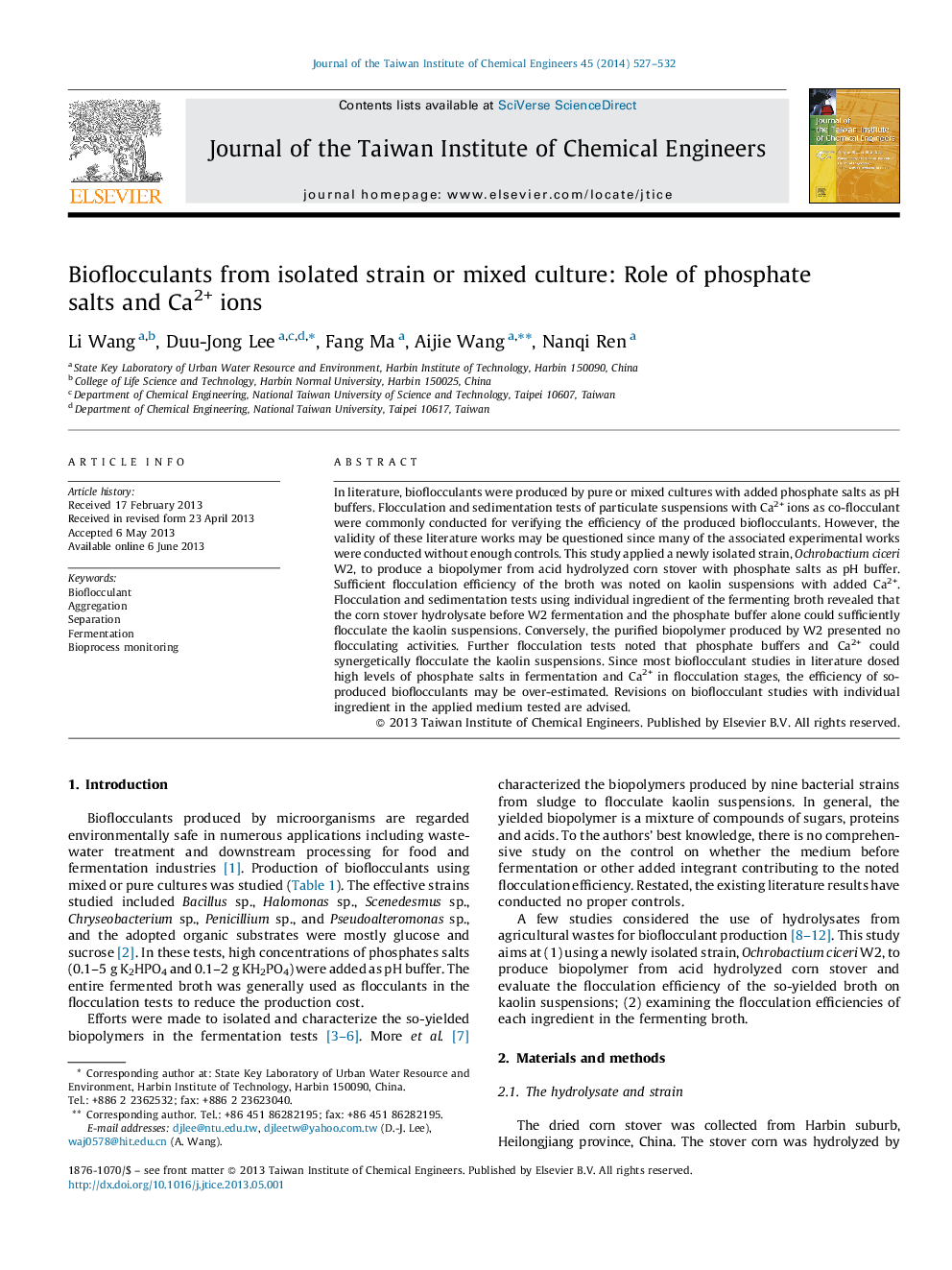| Article ID | Journal | Published Year | Pages | File Type |
|---|---|---|---|---|
| 691392 | Journal of the Taiwan Institute of Chemical Engineers | 2014 | 6 Pages |
•Bioflocculants were yielded by W2 from corn stover hydrolysate.•Broth had high flocculating activities to kaolin suspensions.•Purified biopolymer has no flocculating activities.•Phosphate buffers and Ca2+ ions had high flocculating activities.•Control tests with ingredients in medium are advised.
In literature, bioflocculants were produced by pure or mixed cultures with added phosphate salts as pH buffers. Flocculation and sedimentation tests of particulate suspensions with Ca2+ ions as co-flocculant were commonly conducted for verifying the efficiency of the produced bioflocculants. However, the validity of these literature works may be questioned since many of the associated experimental works were conducted without enough controls. This study applied a newly isolated strain, Ochrobactium ciceri W2, to produce a biopolymer from acid hydrolyzed corn stover with phosphate salts as pH buffer. Sufficient flocculation efficiency of the broth was noted on kaolin suspensions with added Ca2+. Flocculation and sedimentation tests using individual ingredient of the fermenting broth revealed that the corn stover hydrolysate before W2 fermentation and the phosphate buffer alone could sufficiently flocculate the kaolin suspensions. Conversely, the purified biopolymer produced by W2 presented no flocculating activities. Further flocculation tests noted that phosphate buffers and Ca2+ could synergetically flocculate the kaolin suspensions. Since most bioflocculant studies in literature dosed high levels of phosphate salts in fermentation and Ca2+ in flocculation stages, the efficiency of so-produced bioflocculants may be over-estimated. Revisions on bioflocculant studies with individual ingredient in the applied medium tested are advised.
